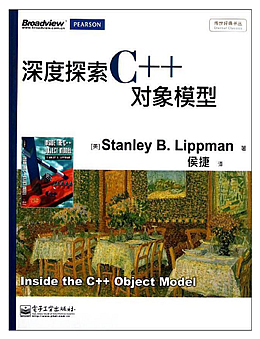给寻找编程代码教程的朋友们精选了相关的编程文章,网友程阳平根据主题投稿了本篇教程内容,涉及到C++顺序表操作、C++、顺序表、C++顺序表操作相关内容,已被697网友关注,下面的电子资料对本篇知识点有更加详尽的解释。
C++顺序表操作
编写程序,实现顺序表的下列功能:
- 从键盘输入数据建立一个顺序表
- 输出该顺序表
- 往顺序表中插入数据
- 从顺序表中删除数据
- 给定数据,进行查找,给出查找成功和失败信息
C++代码:
#include#include #include "windows.h" using namespace std; // 定义顺序表结构体 struct SequentialList { int* base; // 顺序表首地址 int length; // 顺序表长度 int count; // 顺序表当前元素个数 }; // 初始化结构体 bool initSequentialList(SequentialList& s) { // 如果之前已有数组,则释放之前的数组 if (s.length >= 0) { delete s.base; } // 初始化一个长度为size数组 int size; cout << "输入顺序表的长度:"; cin >> size; s.base = new int[size]; s.length = size; s.count = 0; // 清理屏幕 system("cls||clear"); // 判断初始化成功或失败 if (s.base != NULL) { return true; }else { return false; } } // 打印顺序表各个元素 void printItems(SequentialList& s) { // 清理屏幕 system("cls||clear"); if (s.count > 0) { string temp(10, '-'); cout << temp + "打印顺序表" + temp << endl; for (int i = 0; i < s.count; i++) { cout << "[" + to_string(i) + "]" + to_string(s.base[i]) << endl; } } else { cout << "无元素打印!" << endl; } } // 头插 bool topInsert(SequentialList& s, int item) { // 清理屏幕 system("cls||clear"); // 表满 操作失败 if (s.count == s.length) { return false; } if (s.count > 0) { // 所有元素向后移动1位 for (int i = s.count - 1; i >= 0; i--) { s.base[i + 1] = s.base[i]; } } // 如果count为0 正常插入元素 s.base[0] = item; s.count ++; return true; } // 尾插 bool bottomInsert(SequentialList& s, int item) { // 清理屏幕 system("cls||clear"); if (s.count == s.length) { // 表满->结束 return false; }else { // 没满直接尾插 s.base[s.count] = item; s.count++; return true; } } // 指定位置插入 bool indexInsert(SequentialList& s, int index, int item) { // 清理屏幕 system("cls||clear"); // 判断下标是否给错 或者 表满 -> 结束 if (0 > index || index > s.count || s.length == s.count) { return false; } if (index == 0) { // 调用头插 topInsert(s, item); }else if (index == s.count) { // 调用尾插 bottomInsert(s, item); }else { // index以及后面的所有元素 向后移动1位 for (int i = s.count - 1; i >= index; i--) { s.base[i + 1] = s.base[i]; } //插入操作 s.base[index] = item; s.count++; } return true; } // 头删 bool topDelete(SequentialList& s) { // 清理屏幕 system("cls||clear"); // 如果没元素 -> 结束 if (s.count == 0) { return false; } // 元素个数大于1 所有元素向前移动1位 if (s.count > 1) { for (int i = 0; i < s.count - 1; i++) { s.base[i] = s.base[i + 1]; } } s.count--; return true; } // 尾删 bool bottomDelete(SequentialList& s) { // 清理屏幕 system("cls||clear"); // 如果没元素 -> 结束 if (s.count == 0) { return false; } // 伪删除 s.count--; return true; } // 删除指定位置的元素 bool indexDelete(SequentialList& s, int index) { // 清理屏幕 system("cls||clear"); // 没元素 或 给错下标 -> 结束 if (s.count == 0 || index < 0 || index >= s.count ) { return false; } if (index == 0) { // 调用头删 topDelete(s); }else if (index == s.count) { // 调用尾删 bottomDelete(s); }else { // index后面的元素向前覆盖 for (int i = index; i < s.count - 1; i++) { s.base[i] = s.base[i + 1]; } s.count--; } return true; } // 查找某元素在顺序表的位置 void findElement(SequentialList& s, int item) { // 清理屏幕 system("cls||clear"); // -1为找不到 int count = 0; // 匹配 for (int i = 0; i < s.count; i++) { if (s.base[i] == item) { count++; cout << "找到第" + to_string(count) + "个"+to_string(item)+"的下标为["+to_string(i)+"]" << endl; } } if (count == 0) { cout << "未找到" + to_string(item) + "元素!" << endl; } } // 打印菜单 void printMenu(){ string temp(10, '-'); cout << endl; cout << temp+"操作菜单"+temp << endl; cout << "[1]建立一个顺序表" << endl; cout << "[2]打印顺序表" << endl; cout << "[3]向顺序表[头部]插入新元素" << endl; cout << "[4]向顺序表[尾部]插入新元素" << endl; cout << "[5]向顺序[指定位置]部插入新元素" << endl; cout << "[6]删除顺序表[头部]的元素" << endl; cout << "[7]删除顺序表[尾部]的元素" << endl; cout << "[8]删除顺序表[指定位置]的元素" << endl; cout << "[9]查找某元素在顺序表的位置" << endl; cout << "[0]退出操作" << endl; cout << temp+temp+temp << endl; } // 函数主入口 int main() { int options; // 选项 int flag = true; // while循环标记 SequentialList s; // 顺序表结构体变量 int newItem; // 新元素 int index; // 插入|删除元素的下标 while (flag) { printMenu(); cout << "请操作:" ; cin >> options; switch (options) { case 1: if (initSequentialList(s)) { cout << "\t初始化成功" << endl; } else { cout << "\t初始化失败" << endl; } break; case 2: printItems(s); break; case 3: cout << "新元素:"; cin >> newItem; if (topInsert(s, newItem)) { cout << "头部成功插入("+ to_string(newItem)+")" << endl; } else { cout << "顺序表已满,头部插入操作失败!!!" << endl; } break; case 4: cout << "新元素:"; cin >> newItem; if (bottomInsert(s, newItem)) { cout << "尾部成功插入(" + to_string(newItem) + ")!!!" << endl; } else { cout << "顺序表已满,尾部插入操作失败!!!" << endl; } break; case 5: cout << "新元素:"; cin >> newItem; cout << "插入位置:"; cin >> index; if (indexInsert(s, index, newItem)) { cout << "在["+to_string(index) + "]成功插入(" + to_string(newItem) + ")!!!" << endl; } else { cout << "插入位置错误或顺序表已满,操作失败!!!" << endl; } break; case 6: if (topDelete(s)) { cout << "头部元素删除成功!!!" << endl; } else { cout << "头部元素删除操作失败!!!" << endl; } break; case 7: if (bottomDelete(s)) { cout << "尾部元素删除成功!!!" << endl; } else { cout << "尾部元素删除操作失败!!!" << endl; } break; case 8: cout << "删除位置:"; cin >> index; if (indexDelete(s, index)) { cout <<"删除[" + to_string(index) + "]元素成功!!!" << endl; } else { cout << "删除位置错误或顺序表为空,操作失败!!!" << endl; } break; case 9: cout << "要查找的元素:"; cin >> newItem; findElement(s, newItem); break; case 0: // 清理屏幕 system("cls||clear"); flag = false; cout << "---本次操作结束---" << endl; break; default: cout << "请输入正确的序号!!!" << endl; break; } } return 0; }
运行结果:

到此这篇关于C++中顺序表操作的示例代码的文章就介绍到这了,更多相关C++顺序表操作内容请搜索码农之家以前的文章或继续浏览下面的相关文章希望大家以后多多支持码农之家!


















